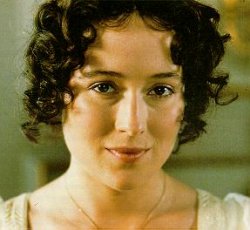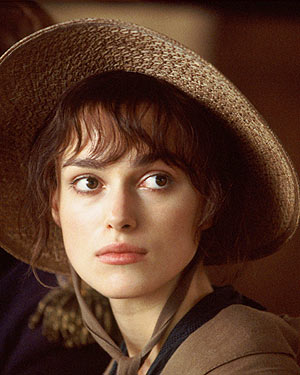
Jane Austen, Fanny, Emma, Elizabeth Bennet, and Me
Posted by mimi on Jan 28, 2013 in dish | 0 commentsToday marks the 200th anniversary of the publication of Pride and Prejudice. Originally titled First Impressions, it was the first manuscript Jane Austen wrote, but not the first to be published; the first edition title page reads “by the author of Sense and Sensibility.”
When I was in college, my fabulous advisor, the inimitable Dr. Jim Skinner, was the departmental expert in all things Austen. At the time, I wasn’t interested. I’d had a bad run-in with Victorian novels in high school (Thomas Hardy’s Far From the Madding Crowd being a prime example), so I assiduously avoided pretty much everything published in Great Britain in the 1800s unless it was poetry. I know, I know. Austen has nothing in common with the Victorians. She’s closer to the Brontës (whom I also assiduously avoided), but they really aren’t the same thing, either. Still, Dr. Skinner made me promise that someday I’d join him and become a Janeite. To do that, I’d have to read all six Austens.
Yeah, right, I thought at the time. I’ll hop right on that. Just as soon as I fall in love with Hemingway (which wasn’t ever going to happen, given how much I love my Faulkner). So it was some time later–ten years, maybe?–before I finally gave in. I mean, what kind of English teacher could I be if I’d never even cracked the cover of an Austen? And like thousands before me, my first impression of an Austen heroine was Lizzie Bennet.
 Talk about your girl crushes. Elizabeth is intelligent, outspoken, loyal, loving, and smart-alecky–all the things I hope I am in my better moments. She loves her dad, gets exasperated with her mother and sillier sisters, and adores her sister Jane. She has some flaws, too, as a good heroine should. She’s too enamored of her own opinion and too stubborn to admit when she’s wrong. That sounds familiar!
Talk about your girl crushes. Elizabeth is intelligent, outspoken, loyal, loving, and smart-alecky–all the things I hope I am in my better moments. She loves her dad, gets exasperated with her mother and sillier sisters, and adores her sister Jane. She has some flaws, too, as a good heroine should. She’s too enamored of her own opinion and too stubborn to admit when she’s wrong. That sounds familiar!
The A&E mini-series of Pride and Prejudice helped all of us fall in love with Mr. Darcy (there’s a reason the emerging-from-the-lake section of my original VHS tape is a bit fuzzy), but one highlight was Jennifer Ehle’s portrayal of Elizabeth, complete with “fine eyes” sparkling with mischief. Her film counterpart fifteen years later, Keira Knightly, played Lizzie as slightly younger and a bit more impulsive, but did a lovely job expressing her joie de vivre and her optimism that despite her disadvantages of money and status, she would land on her feet. And did she ever! The new mistress of Pemberley has a happy ending for the ages.
 But Elizabeth isn’t Austen’s only wonderful heroine. She also created steady and sensible Elinor Dashwood and her impulsive and passionate sister Marianne; sprightly Emma Woodhouse (disastrous at matchmaking, but happy to finally discover her perfect man right under her oblivious nose); patient Anne Eliot, given a second chance at love in Persuasion; fanciful Catherine Morland, up to her ears in Gothic novels at Northanger Abbey; and good-natured and loving Fanny Price, finding her calling and her cousin at Mansfield Park. In all, Austen’s wit and style shine through. She is a wonderful writer with an uncanny eye for the ridiculous, skewering society and its buffoons with deadly accuracy.
But Elizabeth isn’t Austen’s only wonderful heroine. She also created steady and sensible Elinor Dashwood and her impulsive and passionate sister Marianne; sprightly Emma Woodhouse (disastrous at matchmaking, but happy to finally discover her perfect man right under her oblivious nose); patient Anne Eliot, given a second chance at love in Persuasion; fanciful Catherine Morland, up to her ears in Gothic novels at Northanger Abbey; and good-natured and loving Fanny Price, finding her calling and her cousin at Mansfield Park. In all, Austen’s wit and style shine through. She is a wonderful writer with an uncanny eye for the ridiculous, skewering society and its buffoons with deadly accuracy.
In the end, Dr. Skinner was right. I was a Janeite all along; I just needed a nudge to admit it to myself. Perhaps there’s more Austen heroine in there than I realized!
